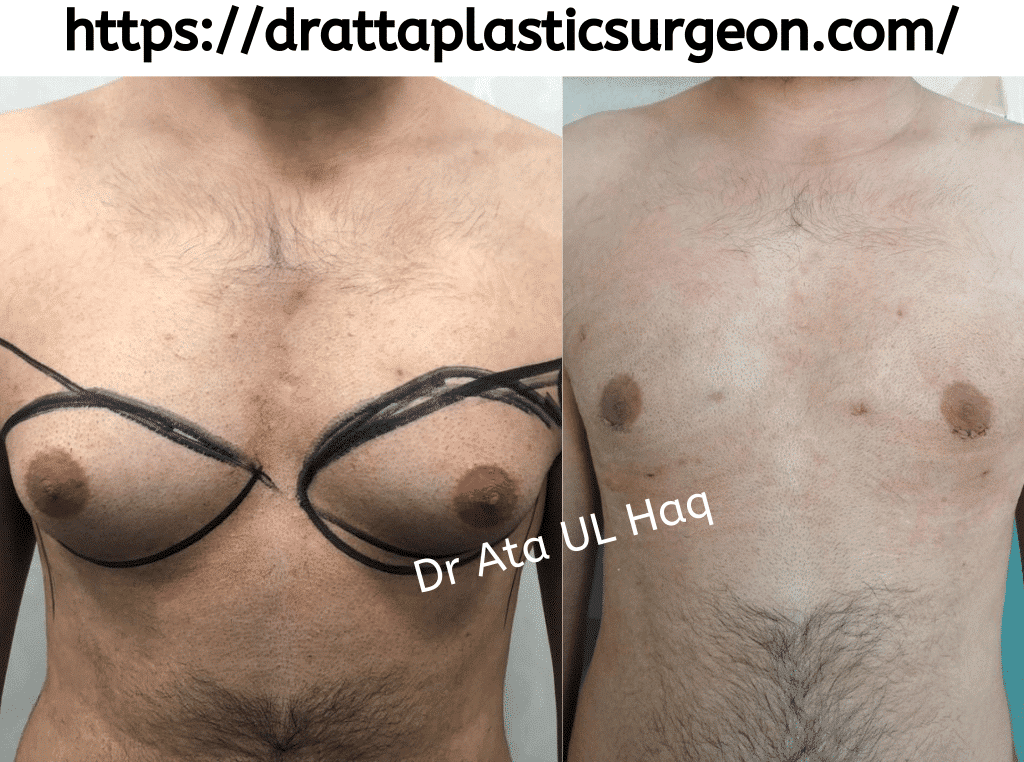Gynecomastia is the enlargement of breast tissue in males, often caused by a hormonal imbalance. It can occur during puberty, with ageing, or because of obesity, certain medications, or lifestyle habits. There are many men out there who are curious about performing gynecomastia treatment without surgery. This blog will focus on how simple changes in diet and exercise can play a key role in reducing or managing gynecomastia. By understanding the connection between daily habits and hormone health, men can take active steps toward feeling more confident and improving their overall well-being.
Can you go for Gynecomastia Treatment Without Surgery?
Figuring out if you can undergo gynecomastia treatment without surgery is difficult. Yes, in mild cases, one can undergo treatment of gynecomastia non-surgically, especially among teenagers. The hormone levels may be displaced during the puberty period, and once this is done, the problem may be improved without any kind of therapy.
In adults, modifying toward an improvement in a healthy lifestyle may help decrease disease symptoms and help maintain hormonal balance. This may constitute physical exercise, balanced eating habits, coping with stress and drug use.
Such habits can help you a lot if you choose gynecomastia treatment without surgery. It can bring patience and consistency as well. Remember that every individual has a different body; therefore, the progress timeline will vary a bit.
Role of Diet in Treating Gynecomastia Naturally
Foods to Include
Healthy nutrition is one of the best approaches to successful results without surgery. Lean meats such as chicken, fish and eggs contain high levels of protein that build muscle and burn off fat. Broccoli, kale and cauliflower are cruciferous vegetables which are useful in maintaining balanced estrogen levels. Consume good fats such as avocados, nuts, seeds and olive oil to help in keeping the testosterone levels. The metabolism and hormonal balance are also nourished by whole grains, foods with fibre and fruits. It can be enhanced by taking a lot of water and exercise.
Foods to Avoid
Some foods aggravate the effects of gynecomastia and are not advisable. Processed foods contain too much bad fat and food additives that interfere with hormonal levels. The phytoestrogens found in soy products can stimulate estrogens in the body.
An overdose of sugar, especially in soft drinks and snacks, leads to an increase in fats and an imbalance of hormones. Alcohol interferes with liver metabolism and interferes with proper hormonal processing by the body. Limit fried food, greasy food and refined carbs. A hormone-friendly dinner aids the natural healing process and produces long-term results.
Best Exercises to Reduce Gynecomastia Naturally
Now let’s talk about a few healthy exercises that can help with gynecomastia surgery in Pakistan naturally:
Cardio Workouts
Such exercises play a significant role in reducing body fat and, therefore, reducing the level of gynecomastia. HIIT is particularly efficient since it consumes more calories than spending a longer period. You can do sprinting and walking intervals. Moderate exercise, such as jogging or bicycling, is perfect too. Try to achieve 30 minutes of daily exercise five days a week to maintain fat loss and get your heart pumping towards health.
HIIT (High-Intensity Interval Training)
These exercises are brief, rigorous and ideal for fat burning. They indulge in a small amount of activity and rest to keep heart racing and their metabolism riding. This makes your body keep on burning fat despite it having stopped working out. Examples include 30 seconds of sprinting and a minute of walking. Please do it again for 20 minutes. HIIT can be performed using running, cycling, or using bodyweight exercises.
Constant Cardio (Running, Cycling)
This kind of cardio, involving cycling and running, is less tiring and ideal for beginners. It helps in the burning of calories and lowering the fat around the body in general, which may result in making the gynecomastia less visible. A similar practice with 3 to 5 sessions per week works well. It also works best with a combination of a healthy diet and strength training.
Strength Training
Strength training increases muscle, melts fat and converts the upper body as well as the chest. Compound exercises, such as squats and deadlifts, help boost testosterone, which can help in levelling out gynecomastia-related hormones. An effective routine mixes chest exercises with whole-body strength-building exercises 3-4 days per week. This will help to have a long-term effect and a more shapely, thin appearance.
FAQs: Common Questions People Often Ask
1. Can exercise help get rid of gynecomastia?
Exercises play a key role in reducing body fat. But it never helps in removing glandular tissue.
2. How much time will it take to see results with diet and exercise?
Results can vary according to body type. Consistent efforts can make you show visible changes after 10-12 weeks.
3. What supplements can help boost gynecomastia?
Some natural testosterone boosters can help. But those boosters should be taken with caution and medical advice.
4. What is the best diet plan for naturally reducing gynecomastia?
Always go with a low-sugar and high-protein diet, which is rich in cruciferous vegetables and healthy fats, is ideal.
5. What is the best time to go for gynecomastia?
If non-surgical methods are not showing the desired results and the condition is getting severe, then surgery is the practical option.
Ready for a Permanent Solution? Book a Consultation Today!
If you want a successful treatment of gynecomastia, then choosing a consultation with Dr. Ata is the best option. Going for gynecomastia treatment without surgery can disappoint many people because diet and exercise can never show the desired results. Dr Ata, a plastic surgeon, delivers proven and safe surgical solutions for male breast reduction. Contact us to book your consultation, and we will help you to regain confidence one more time.

